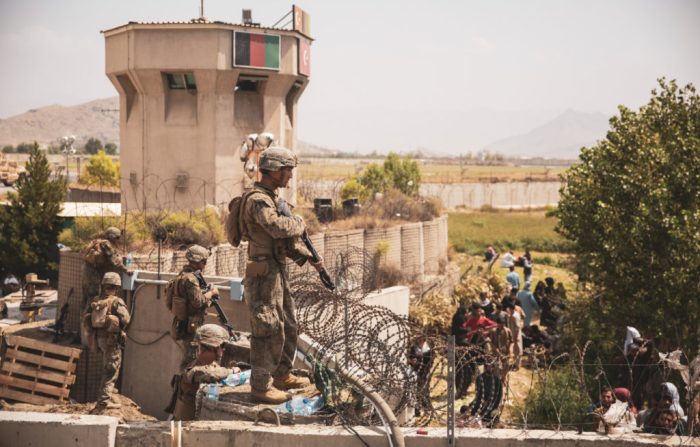
War on Terrorism: South Asias Tumultuous Aftermath
War on terrorism leaves south asia in turmoil – The War on Terrorism, launched in the aftermath of the 9/11 attacks, has left South Asia in turmoil. This region, already marked by historical tensions and complex political landscapes, has been profoundly impacted by the global fight against terrorism. The consequences have been far-reaching, affecting political stability, social fabric, and human rights.
From the rise of religious extremism to the proliferation of terrorist networks, South Asia has faced a multifaceted challenge. The region has been a battleground for various groups, with external actors often fueling the flames of conflict. The War on Terror, while aimed at combating terrorism, has inadvertently contributed to instability and exacerbated existing tensions.
This blog post explores the intricate dynamics of the War on Terror in South Asia, examining its impacts and consequences.
Historical Context: War On Terrorism Leaves South Asia In Turmoil

The history of terrorism in South Asia is a complex and multifaceted one, deeply intertwined with the region’s political, social, and economic landscape. Its roots can be traced back to the colonial era, where nationalist movements employed violent tactics to oppose British rule.
However, the modern-day form of terrorism, characterized by transnational networks and religiously motivated ideologies, emerged in the latter half of the 20th century.This evolution has been shaped by a confluence of factors, including Cold War geopolitical rivalries, the rise of religious extremism, and the emergence of separatist movements.
Major terrorist attacks have had a profound impact on the region’s political landscape, shaping its security policies, fostering regional tensions, and impacting its economic growth.
Impact of Major Terrorist Attacks on the Region’s Political Landscape
Major terrorist attacks have had a significant impact on the region’s political landscape. These attacks have often served as catalysts for political change, shaping security policies, fostering regional tensions, and impacting economic growth.
- The assassination of Indira Gandhi in 1984, by her Sikh bodyguards, triggered widespread anti-Sikh riots in India, leading to political instability and the rise of Sikh separatism.
- The 1993 Bombay bombings, attributed to a Muslim extremist group, highlighted the vulnerability of India’s financial capital and prompted the government to strengthen its counterterrorism measures.
- The 2001 attack on the Indian Parliament, carried out by Lashkar-e-Taiba, led to heightened tensions between India and Pakistan and a period of military mobilization along the border.
- The 2008 Mumbai attacks, conducted by Lashkar-e-Taiba, resulted in a significant loss of life and highlighted the need for improved security coordination and intelligence sharing between India and other countries.
- The 2016 Pathankot airbase attack, attributed to Jaish-e-Mohammed, further escalated tensions between India and Pakistan and underscored the challenges in combating cross-border terrorism.
These attacks have not only led to heightened security measures but have also had a profound impact on public opinion and political discourse. They have fueled a sense of insecurity and fear, and have often been used by political leaders to justify hawkish policies and nationalist agendas.
Role of External Actors in Fueling Terrorism in South Asia, War on terrorism leaves south asia in turmoil
External actors have played a significant role in fueling terrorism in South Asia, providing financial support, training, and ideological inspiration to terrorist groups.
- Pakistan has been accused of providing safe havens and support to terrorist groups like Lashkar-e-Taiba and Jaish-e-Mohammed, which operate in Kashmir and target India.
- The United States, in its pursuit of combating the Taliban and Al-Qaeda, has inadvertently destabilized the region, creating a power vacuum that has been exploited by extremist groups.
- The influx of foreign fighters from countries like Afghanistan, Syria, and Iraq has added to the pool of radicalized individuals in South Asia, posing a new challenge to security agencies.
- The proliferation of extremist ideologies online has also contributed to the spread of radicalization and recruitment by terrorist groups, facilitating the creation of virtual networks that transcend geographical boundaries.
The involvement of external actors has complicated the fight against terrorism in South Asia, making it a multi-layered challenge that requires regional cooperation and a comprehensive approach.
The war on terrorism has left South Asia in turmoil, a region already grappling with complex geopolitical tensions. The conflict has fueled instability, displaced millions, and exacerbated existing social and economic disparities. I believe that the resolution to authorize force, which I detailed in my blog post why I opposed the resolution to authorize force , was a mistake that has contributed to the current crisis.
While the initial intent was to address terrorism, the unintended consequences have been far-reaching, deepening the wounds in South Asia and creating a cycle of violence that seems difficult to break.
The “war on terror” has left South Asia in a perpetual state of turmoil, with its roots tangled in a web of political complexities and regional rivalries. It’s a war that has cost countless lives and destabilized entire nations, leaving many to question its true purpose.
Some argue that the war itself is a smokescreen, a convenient justification for political maneuvering and military intervention. This begs the question: is this war truly about combating terrorism, or is it something else entirely? This war is a fraud , some claim, a facade masking a deeper agenda.
Regardless of the motivations, the reality is that the war on terror has left South Asia reeling, struggling to rebuild amidst the wreckage of conflict and uncertainty.
The war on terrorism has left South Asia in a state of perpetual turmoil, with its impact felt across generations. The economic fallout, especially in the form of increased debt, has had a devastating effect on families, leaving many struggling to make ends meet.
This financial strain, as explored in debt and the effect on children , often translates to a lack of resources for children, jeopardizing their education and well-being. The cycle of violence and poverty continues, leaving South Asia in a precarious position, where the scars of the war on terrorism are deeply etched in the lives of its people.






